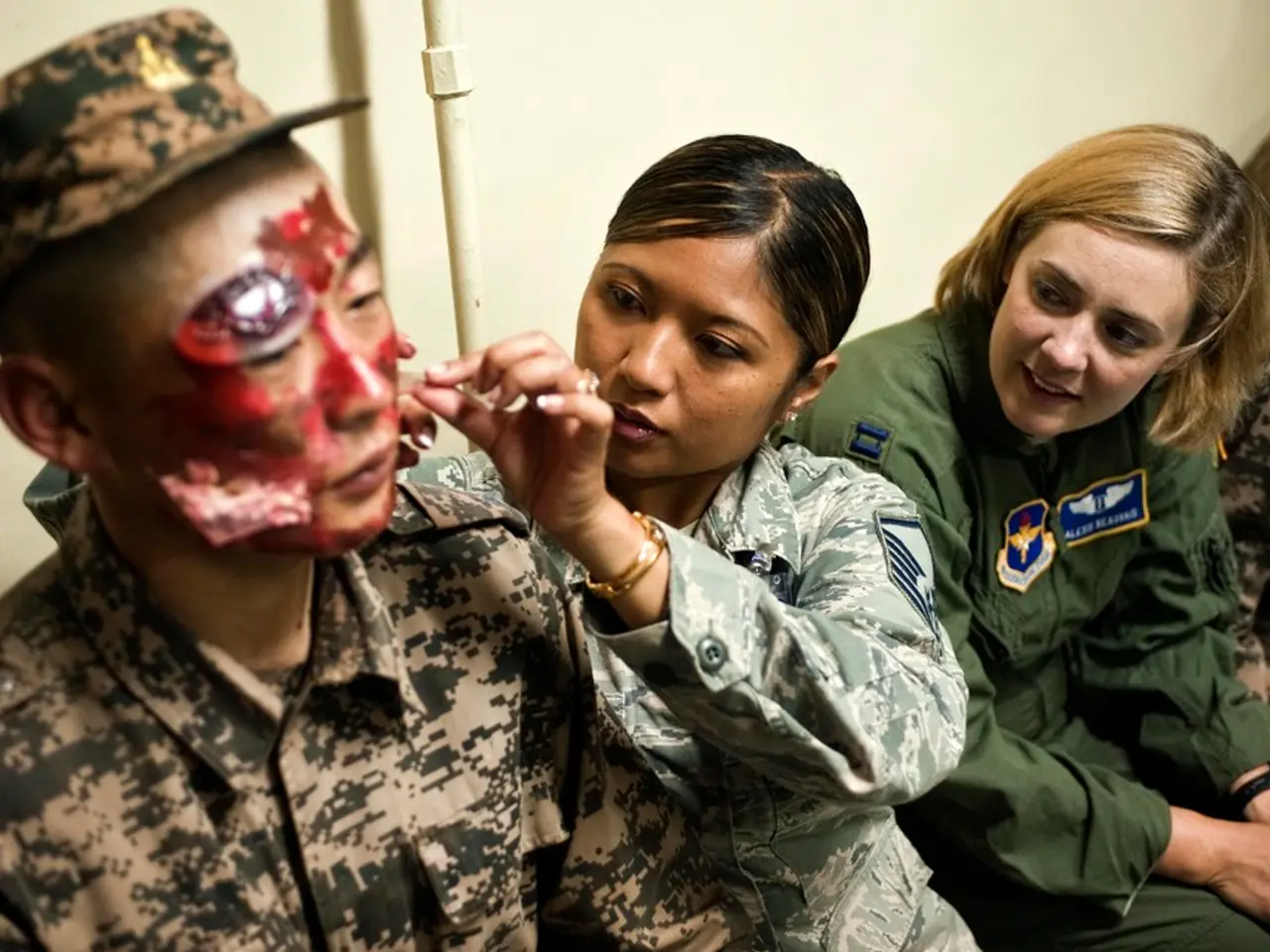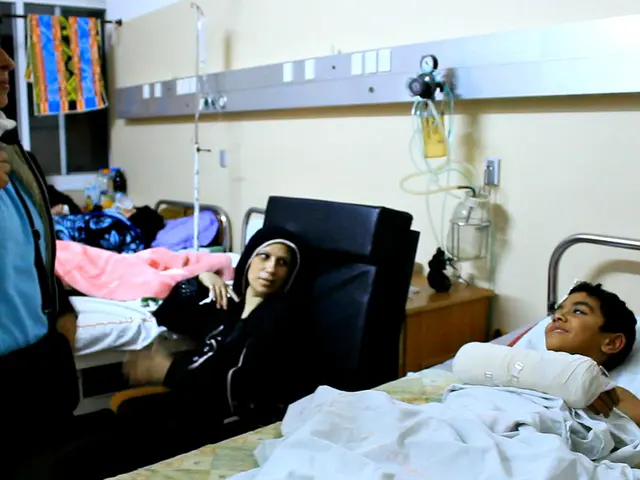Frequently Asked Questions about Skin Wounds Related to Atopic Dermatitis
In the world of skin conditions, atopic dermatitis is a common challenge. This form of eczema can cause inflammation and irritation, leading to a host of symptoms, including burning sensations. Here's a guide on how to manage these uncomfortable sensations effectively.
Firstly, when it comes to clothing, cotton or cotton blends are recommended for covering wounds. Wool and other irritating fabrics should be avoided. Covering wounds with a bandage, after applying petroleum jelly, can help protect the skin and promote healing.
When it comes to treating burning sensations, a tailored approach is key. Topical corticosteroids, such as hydrocortisone, are first-line anti-inflammatory agents that reduce itching and inflammation. However, they are not recommended for wounds with openings.
Topical calcineurin inhibitors and phosphodiesterase (PDE4) inhibitors are immune-modulating creams or ointments that reduce inflammation without the skin-thinning effects of steroids. They are useful in sensitive areas and to reduce burning sensations.
Moisturizers and barrier repair emulsions, like Vanicream, Cerave, Cetaphil Eczema Restoraderm, or La Roche Posay Lipikar, help restore skin hydration and barrier function, which can reduce dryness and burning sensations.
Patients are advised to avoid long, hot showers or irritating soaps, instead using lukewarm showers and fragrance-free cleansers to prevent further skin irritation and burning.
For severe cases, oral immunosuppressants or biologics may be necessary. Phototherapy, controlled ultraviolet light therapy, can also reduce inflammation and symptoms including burning, especially in moderate to severe cases when topical treatments fail.
When treating burning sensations specifically, choosing topical agents with lower irritation potential (e.g., PDE4 inhibitors or calcineurin inhibitors) and using intensive moisturizing strategies immediately after bathing ("soak and smear") are emphasized to soothe the skin.
Mild soap or cleanser is recommended for cleaning wounds to avoid irritation and drying out the skin. Wearing gloves can protect hand wounds and prevent exposure to potential irritants. Ointments with antibiotics are not necessary unless recommended by a medical professional.
Sunscreen with titanium dioxide or zinc oxide as the active ingredient and an SPF of 30 or greater is recommended for people with atopic dermatitis to help prevent scarring. Using a moisturizer, such as petroleum jelly, can help atopic dermatitis wounds heal and prevent drying out.
However, it's important to note that mild to moderate burning is a relatively common side effect with skin medications such as calcineurin inhibitors and the corticosteroid tacrolimus. Dryness caused by atopic dermatitis can lead to cracks in the skin, which can become infected and cause sores.
In rare cases, people with atopic dermatitis may experience chronic skin wounds that do not heal within 3 months. If this occurs, it's crucial to seek medical advice.
Lastly, exposure to certain types of chemicals can cause burning in people with atopic dermatitis. It's essential to avoid these where possible. People with atopic dermatitis may also experience burning sensations due to inflammation or damage to nerve cells.
In conclusion, managing burning sensations in atopic dermatitis requires a combination of anti-inflammatory medications, skin barrier repair, trigger avoidance, and for more severe or refractory cases, systemic therapies or phototherapy. Always consult with a healthcare professional for personalised advice.
- In managing atopic dermatitis, choosing topical agents with lower irritation potential, like PDE4 inhibitors or calcineurin inhibitors, is essential to soothe burning sensations.
- Topical calcineurin inhibitors and phosphodiesterase (PDE4) inhibitors are immune-modulating creams or ointments that reduce inflammation without thinning the skin, which can be beneficial in reducing burning sensations.
- Avoiding certain types of chemicals and potential irritants, especially during exposure, can help prevent burning in people with atopic dermatitis.
- Wearing gloves can protect hand wounds in people with atopic dermatitis and prevent exposure to potential irritants that might cause burning.
- Phototherapy, a controlled ultraviolet light therapy, can reduce inflammation and the symptoms of burning, especially in moderate to severe cases when topical treatments fail.





